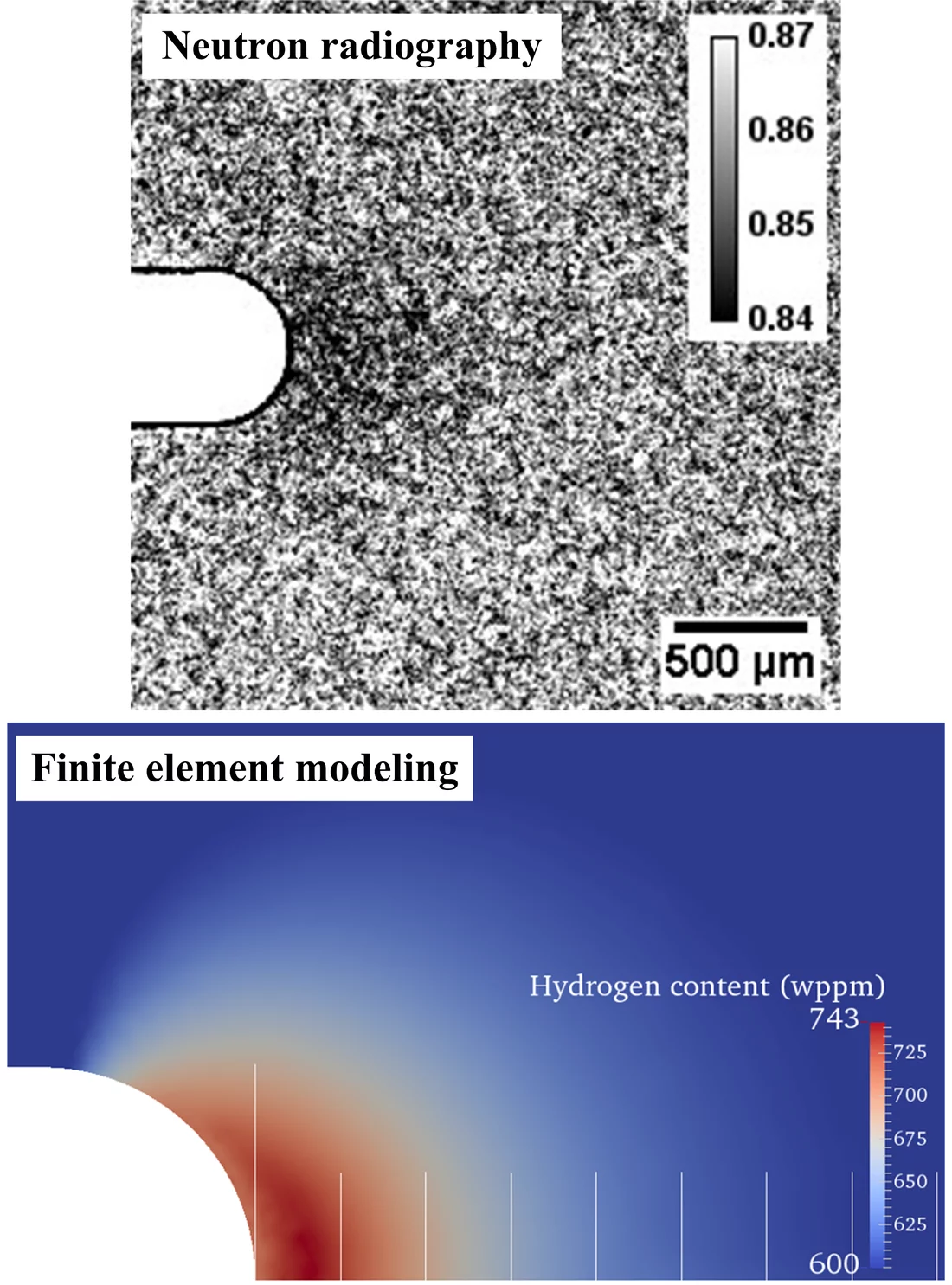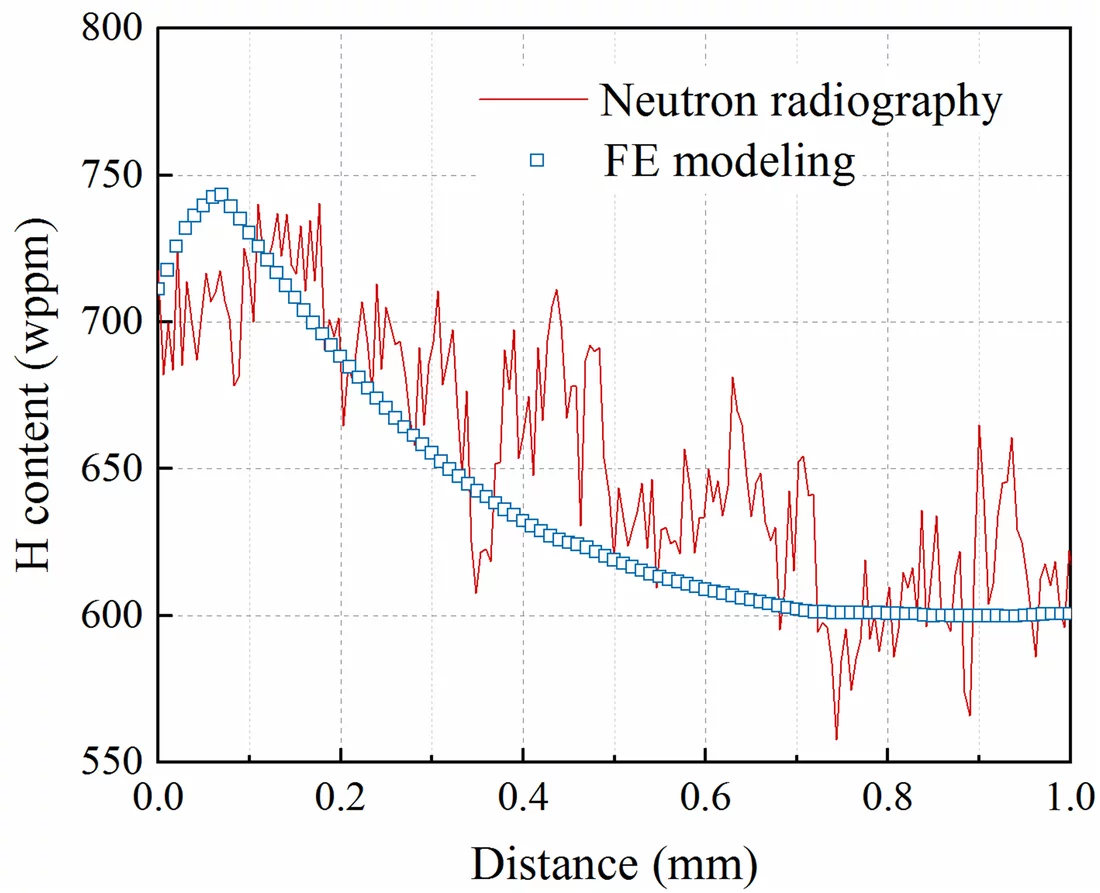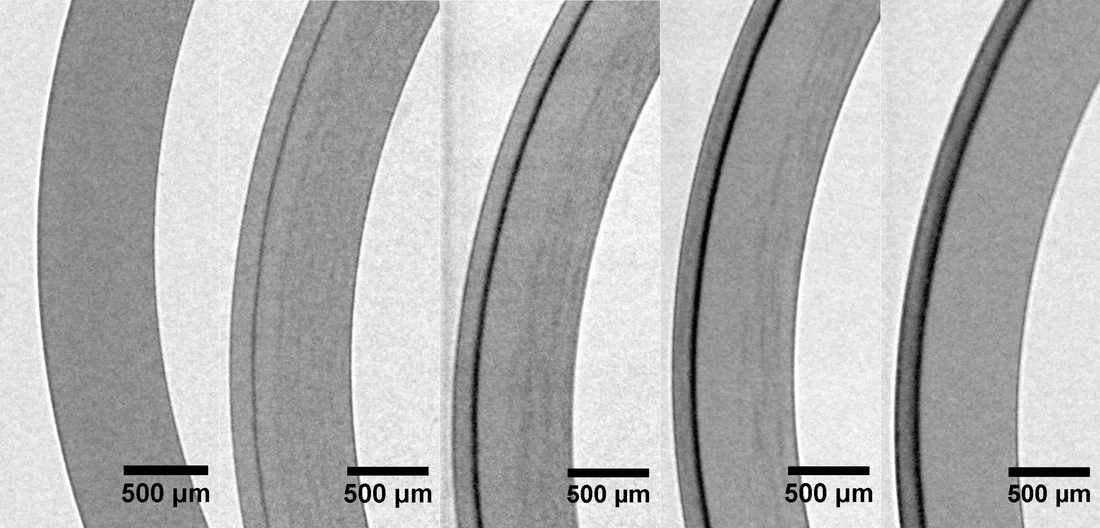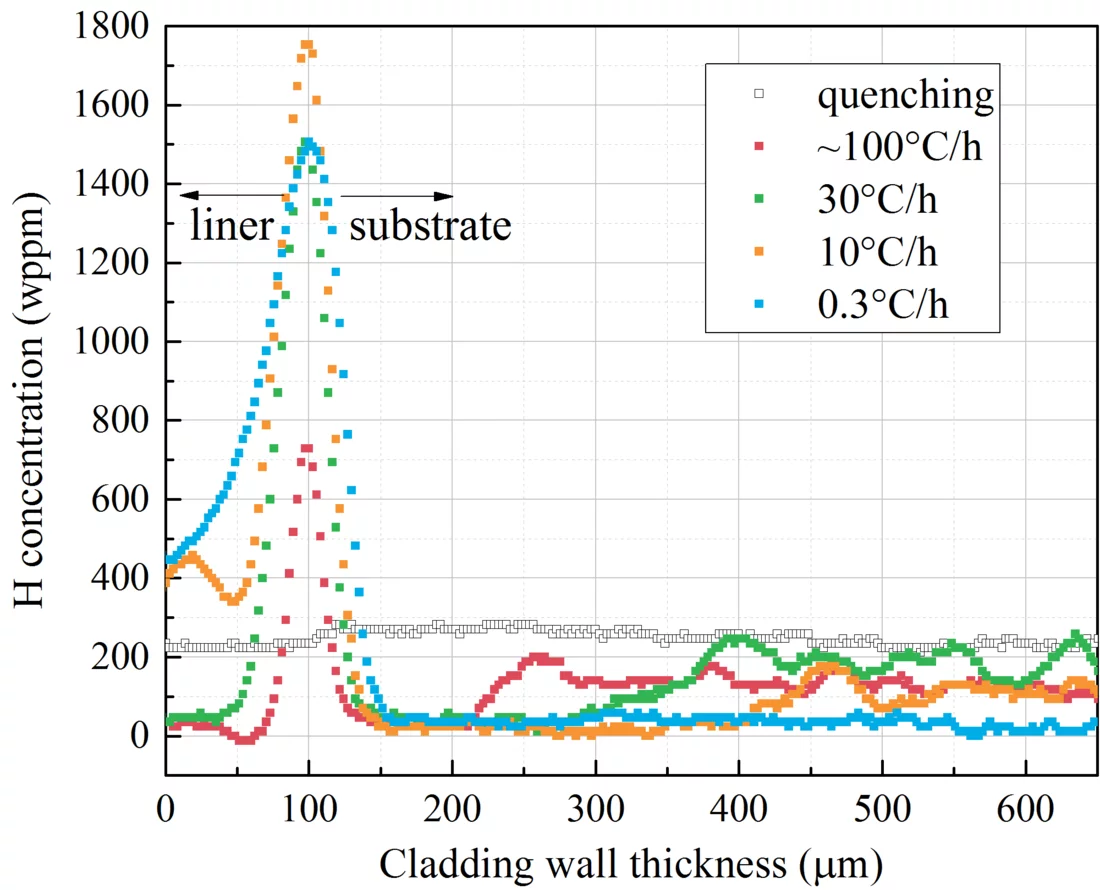Hydrogen concentrated in the structural material of nuclear fuel assemblies is potentially an issue for their mechanical stability. In a nuclear power plant the hot fuel rods are in contact with the cooling water and at the hot surface of the rods the water leads to an oxidation of the metallic fuel rod cladding (i.e. the oxygen of H2O). A part of the released hydrogen diffuses into the cladding material. The cladding consists of a zirconium alloy. If there is enough hydrogen, zirconium hydrides - a brittle hydrogen-metal compound - are formed. These affect the mechanical properties of the cladding material that eventually is a topic for the handling, storage and transportation of used fuel assemblies.
Due to the high mobility of hydrogen interstitial atoms down temperature and concentration gradients, and up stress gradients, hydrogen distribution in fuel claddings can often be non-uniform, arising the risk for the integrity of spent fuel rods under mechanical load. At the Laboratory of Nuclear Materials (LNM) in collaboration with the Laboratory of Neutron Scattering and Imaging (LNS), hydrogen redistribution in zirconium alloys was quantified by neutron radiography using the state-of-the-art detector of PSI Neutron Microscope, and computed in thermodynamics, for providing new insights and prediction on hydrogen diffusion behavior during storage of spent fuel (especially dry-storage conditions as it is the case for the majority of spent fuel in Switzerland).
The hydrogen present in the cladding, depending on concentration and temperature, in solid solution or as zirconium hydrides can be deleterious in both forms. The hydrides exhibit rather low fracture toughness in comparison with the zirconium matrix. In solid solution, hydrogen can diffuse and provoke a time- and diffusion-dependent mechanism of cracking, the so-called Delayed Hydride Cracking (DHC), where hydrogen in solid solution diffuses to a stress raiser followed by hydrides nucleation and growth, eventually initiating crack propagation. DHC is an iterating process which can be triggered already at rather low mechanical stresses.
The Laboratory of Nuclear Materials (LNM) in collaboration with the Laboratory of Neutron Scattering and Imaging (LNS) utilized the cutting-edge detector of PSI Neutron Microscope at SINQ to gain insight into the hydrogen redistribution under various driving factors. Benefiting from high spatial resolution far beyond what is elsewhere possible in the neutron imaging community, quantification of hydrogen concentrations with a sub-10 micrometer spatial resolution was achieved. In combination with thermodynamics modeling, new experimental insights and theoretical prediction were provided for hydrogen diffusion in the cladding material.
Hydrogen diffusion under mechanical stress
There are open questions concerning hydrogen diffusion under stress which is the underlying mechanism of DHC. Classical micrographs with chemical etching to reveal hydrides at the surface of the cladding sample do not sufficiently well determine the hydrogen concentration distribution. Against this background, a notched Zircaloy-4 plate with ~600 wppm hydrogen was employed undergoing a thermo-mechanical bending test to allow hydrogen in solid solution to diffuse solely in a stress field. After the test, the neutron radiograph (Figure 1) shows clearly lower transmission (darker area) in the vicinity of the notch, thus indicating hydrogen accumulation by stress. The concentration field was measured with a hydrogen gradient detectable over 700 µm and a maximum value of 130 wppm. Finite element computation (Figure 1) was then performed by employing the Cauchy stress tensor and hydrogen-induced anisotropic transformation trains as the driving force of hydrogen flux, and finally reached consistent results (Figure 2) with the neutron measurement for both, the geometry of the hydrogen distribution as well as the maximum concentration.
Hydrogen accumulation in liner claddings
The majority of cladding tubes used in Swiss Light Water Reactors (LWRs) normally have a liner, which is an additional layer of about a tenth of the wall thickness and which has a slightly changed alloy composition. The liner can be either at the inner surface to protect from fuel pellet-cladding interaction (like friction and attack by corrosive fission products) or at the outer surface to improve corrosion resistance. Although not designed for this purpose, however, the liner acts as a sink for hydrogen, presenting a high concentration in the liner and depleting the nearby cladding area from hydrogen. A reasonable quantification of hydrogen concentration in the liner and zirconium matrix has not been possible with the up to date used methods. Within this context, the determination of hydrogen concentration across various liner claddings was performed at SINQ in July 2017. Figure 3 shows an example of the effect of various cooling rates on hydrogen distribution in a liner cladding which is used, for instance, in the nuclear power plant of Gösgen KKG. Hydrides accumulations can be visualized in the tube sections after different cooling rates, thanks to the high spatial-resolution of the Neutron Microscope. Figure 4 presents the radial profiles of hydrogen concentration extracted from Figure 3. In contrast to conventional metallography, now the neutron imaging allows to quantify the hydrogen distribution. For instance, hydrogen accumulation at the interface reached saturation of ~1500wppm, and with the cooling rates decreasing further, hydrogen started diffusing into the liner interior. At 10°C/h cooling rate, the liner yields 400 wppm higher concentrations than the substrate despite of a bulk content of 200 wppm. The quantified hydrogen field can deliver input for thermodynamic models to clarify the driving force behind the non-uniform distribution in liner claddings which is of great interest for materials scientists, but also for the nuclear industry.
Contact
Dr. Weijia GongLaboratories for Nuclear Materials (LNM)
Paul Scherrer Institut
E-mail: weijia.gong@psi.ch
Dr. Johannes Bertsch
Laboratories for Nuclear Materials (LNM)
Paul Scherrer Institut
E-mail: johannes.bertsch@psi.ch
Dr. Pavel Trtik
Laboratories for Neutron Scattering and Imaging (LNS)
Paul Scherrer Institut
E-mail: pavel.trtik@psi.ch
Original Publications
[1] W. Gong, P. Trtik, R. Zubler, J. Bertsch, "Stress-induced Hydrogen Redistribution in Zircaloy Measured by High-resolution Neutron Imaging", Water Reactor Fuel Performance Meeting 2017, Jeju, South Korea.[2] W. Gong, P. Trtik, S. Valance, J. Bertsch, "Hydrogen Diffusion under Stress in Zircaloy: High-resolution Neutron Radiography and Finite Element Modeling", Journal of Nuclear Materials 2018 doi:10.1016/j.jnucmat.2018.05.079.



